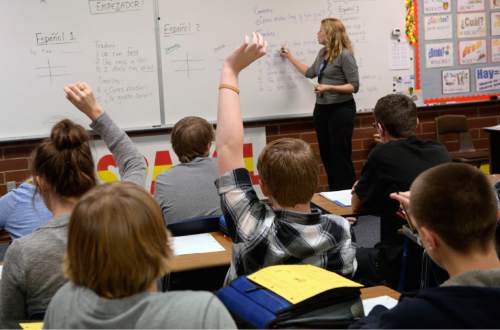This is an archived article that was published on sltrib.com in 2016, and information in the article may be outdated. It is provided only for personal research purposes and may not be reprinted.
Utah continues to set aside fewer public dollars for each K-12 student than any other state.
That's according to a Census Bureau analysis released Thursday that considered data from 2014.
The state's large under-18 population has much to do with its dead-last ranking. Growing student enrollment, now at 633,900, continues to gobble up tax dollars.
Nationally, total per-student school spending ticked up 2.7 percent, or $1,109 — the largest increase since 2008, when the increase was 6.1 percent.
In Utah, the Legislature has boosted state education funding in recent years, by 3.75 percent in 2016 and by 5.6 percent last year. The percentages are higher than the national average, but it hasn't been enough to pull Utah out of last place.
State school board Chairman David Crandall said he isn't sure whether the state will move up the chart in the foreseeable future. But he points to improving test scores as evidence that the state is making progress — and is making wise choices with the funding it does have.
"It's important to make sure that we're spending our money in the best way we can," Crandall said. "Each dollar is precious, and we need to make sure it's going to the benefit of our students."
To that end, Crandall and fellow state education leaders will meet with Utah lawmakers this summer to design a database that will better allow the Legislature and public to trace the path of state education dollars.
Crandall believes the state is taking a good step forward with a plan to use the ACT and SAT college-entrance exams to evaluate student performance. He believes students will be more motivated to show up and perform well if they know scholarships and college admission hinge on those scores.
His board will discuss that plan and others in interim meetings leading up to the 2017 Legislature in January.
The Thursday census data also showed that New York forked over the most per student, at $20,610 — about three times higher than Utah's $6,500. Neighboring Idaho took second-to-last place, with $6,621.
The figures include public schools' overall spending on instruction, salaries and benefits, transportation, building costs, services and supplies.
aknox@sltrib.com Twitter: @anniebknox



